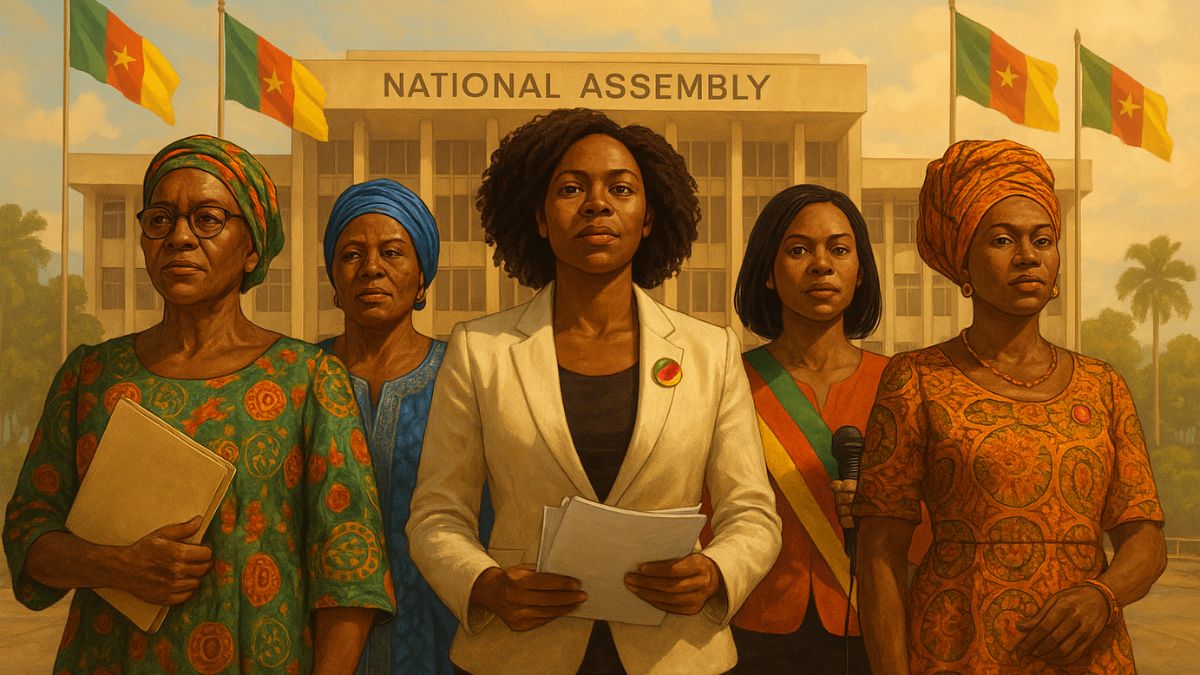In Cameroon, a nation rich in cultural diversity and political complexity, women’s participation in politics has been both a slow evolution and a continuing struggle. While notable progress has been made in recent decades, structural barriers, cultural norms, and institutional inertia continue to limit the full political potential of Cameroonian women.
As the country prepares for the 2025 general elections, it is crucial to examine The Role of Women in Cameroonian Politics—from historical pioneers to current leaders, and the work that remains for a more inclusive and representative democracy.
A Brief Historical Overview
Women in Cameroon have long been active in civic life—even before independence in 1960. However, their involvement in formal politics was initially limited by colonial rule, traditional patriarchy, and restricted access to education.
Key Historical Milestones:
- 1960s–1980s: Women’s political roles were largely symbolic. Most were appointed rather than elected, serving under the patronage of male-dominated political networks.
- 1990s Political Liberalization: The reintroduction of multiparty democracy opened space for civil society and women’s organizations, like the Cameroon National Association for Women’s Empowerment and various NGOs pushing gender rights.
- 2000s–2010s: Increased focus on quotas and gender equality. Cameroon signed multiple international agreements, including the Convention on the Elimination of All Forms of Discrimination Against Women (CEDAW) and the Beijing Platform for Action.
Women in Political Office: Numbers and Influence
While women’s representation has improved, it remains uneven and below parity in most political arenas.
Legislative Representation:
- In the 2020 parliamentary elections, women won 61 out of 180 seats (approx. 33.9%) in the National Assembly.
- The Senate includes 26 female senators out of 100, representing 26%.
These figures place Cameroon above the African average (~25%) but still behind regional leaders like Rwanda (61%).
Executive and Ministerial Roles:
- As of 2024, Cameroon has had no female president, vice president, or prime minister.
- Out of over 60 ministerial positions, fewer than 20% are held by women.
- Women head key ministries such as Basic Education, Women’s Empowerment and the Family, and Scientific Research—but rarely the “power portfolios” like Defense, Finance, or Foreign Affairs.
Local Governance:
Women’s presence in municipal and regional councils is growing but still hindered by socio-cultural expectations and party patronage systems.
International Commitments vs. National Realities
Cameroon has signed and ratified a number of treaties affirming gender equality, including:
- CEDAW (1984)
- African Union Protocol on Women’s Rights
- SDG Goal 5: Achieve gender equality and empower all women and girls
Despite these commitments, enforcement remains weak due to:
- Lack of gender budgeting
- Inadequate legal enforcement
- Patriarchal legal frameworks (e.g., inheritance, land ownership laws)
Cultural and Structural Barriers
1. Patriarchal Social Norms
Many communities, especially in rural areas, view politics as a “man’s domain.” Women who run for office may face:
- Stigmatization
- Family pressure to withdraw
- Low public trust or credibility
2. Economic Disempowerment
- Campaigning is expensive, and women have less access to capital and political financing.
- Many female politicians rely on party sponsorship or male benefactors.
3. Educational Disparities
Women, especially in the North and Far North regions, have lower literacy rates, which affects political confidence, capacity, and electability.
4. Gender-Based Violence in Politics
Reports of intimidation, online harassment, and even physical threats deter many women from running for office or speaking out on sensitive issues.
Leading Female Political Figures in Cameroon
Pauline Irene Nguene
Minister of Social Affairs since 2015, known for championing inclusive development.
Kah Walla
President of the Cameroon People’s Party (CPP), entrepreneur, and outspoken advocate for political reform. She ran for president in 2011—Cameroon’s first female candidate in decades.
Hon. Julienne Keutcha
The first female MP in Cameroon (1960s), a pioneer of women’s representation in post-independence politics.
Dr. Justine Diffo
Founder of the “More Women in Politics” initiative, which trains and supports female candidates.
What’s Being Done: Programs & Reforms
Several programs aim to boost women’s political participation:
- More Women in Politics (MWIP): Offers training in leadership, electoral strategy, and public speaking.
- UN Women Cameroon: Provides advocacy and technical assistance to institutions and female candidates.
- Electoral Quotas (Soft Targets): Though not legislated, parties are encouraged to promote women candidates. The ruling CPDM has increased its female representation slightly as a result.
The 2025 Elections: An Opportunity for Change?
With growing pressure from civil society and the international community, the 2025 elections offer a vital opportunity to improve gender parity.
Key Questions to Watch:
- Will parties include more women in winnable positions on electoral lists?
- Can new coalitions empower women at the grassroots and national levels?
- Will digital platforms and youth movements open alternative pathways for female leadership?
Recommendations to Strengthen The Role of Women in Cameroonian Politics
- Legal Quotas: Enforce a 30% minimum threshold for women in all elective offices.
- Funding Support: Create a public campaign fund for female candidates.
- Political Mentorship: Institutionalize mentorship between veteran female leaders and emerging voices.
- Civic Education: Promote women’s leadership as a social norm through schools, media, and churches/mosques.
- Gender-Sensitive Media Coverage: Train journalists to avoid stereotyping female politicians.
Conclusion: Toward a More Inclusive Democracy
The Role of Women in Cameroonian Politics is no longer peripheral. From pioneering MPs to presidential hopefuls, women have proven their capability and commitment to national development. Yet significant barriers remain, and the fight for full inclusion is ongoing.
As Cameroon looks ahead to 2025 and beyond, empowering women in politics is not just a gender issue—it’s a democratic imperative. A political system that represents all Cameroonians, regardless of gender, is more legitimate, more stable, and ultimately, more just.
📌 Share Your Thoughts:
What steps do you think Cameroon should take to boost women’s political participation before the 2025 elections? Let us know in the comments.

